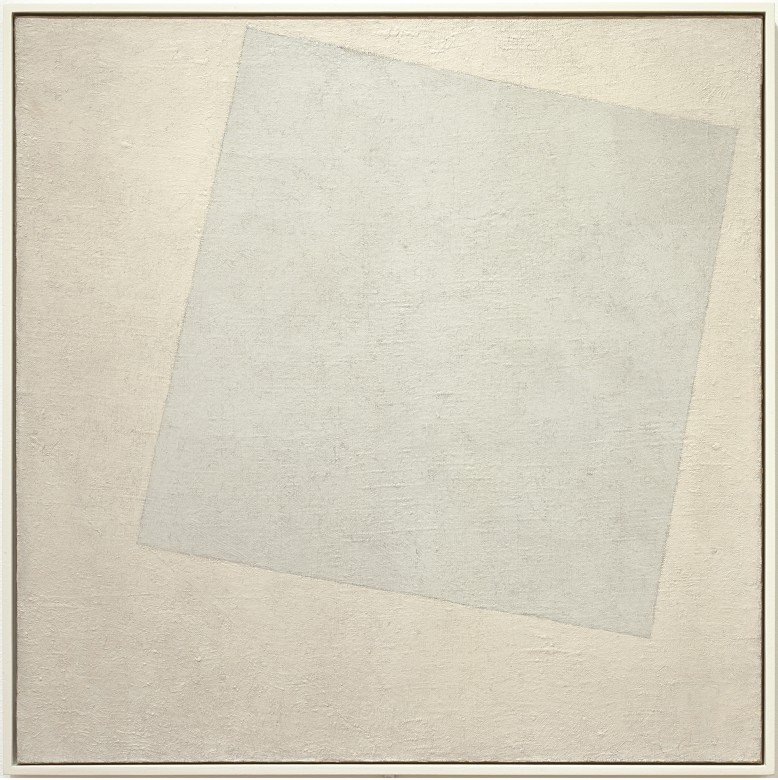
Information
Information
Suprematist Composition: White on White by Kazimir Malevich (1879–1935) removes all pictorial elements from the painting, leaving only a white square floating on a white background. Rather than being a mere reduction of pictorial content, Malevich’s monochrome offers the perception of infinite space. As artist and theorist László Moholy-Nagy articulated in New Vision (1928), White on White is “an ideal plane for kinetic light and shadow effect.” The reduction of color allows viewers to direct their attention to the materiality of the painting. Flatness, light, and shadow become principal elements of the work, which led Moholy-Nagy to describe it as “a miniature cinema screen.” The work represents the beginning of the monochrome in modern art, which continued manifesting itself in a variety of media well into the second half of the twentieth century. —LH
Image: The Museum of Modern Art, 1935; Acquisition confirmed in 1999 by agreement with the Estate of Kazimir Malevich and made possible with funds from the Mrs. John Hay Whitney Bequest (by exchange), 817.1935. © The Museum of Modern Art/Licensed by SCALA / Art Resource, NY.